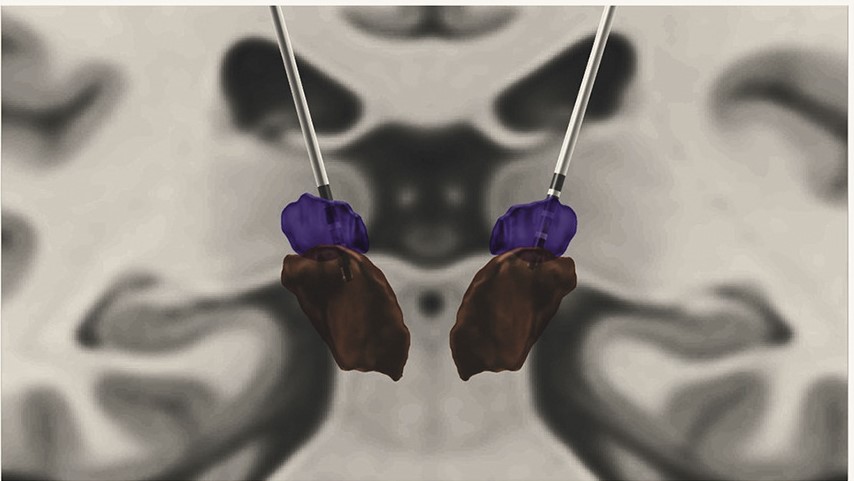Subthalamic nucleus oscillations correlate with vulnerability to freezing of gait in patients with Parkinson's disease.
People with Parkinson’s can suddenly and unexpectedly stop when walking, as if frozen for a few seconds. Little is known about how this freezing of gait comes about, and this aspect of Parkinson’s is often difficult to treat. Here, we link some nerve cell activities deep in the brain to the susceptibility to freezing when walking.
Freezing of gait (FOG) is a disabling clinical phenomenon often found in patients with advanced Parkinson's disease (PD). FOG impairs motor function, causes falls and leads to loss of independence. Whereas dual tasking that distracts patients' attention precipitates FOG, auditory or visual cues ameliorate this phenomenon. The pathophysiology of FOG remains unclear. Previous studies suggest that the basal ganglia are involved in the generation of FOG. Investigation of the modulation of neuronal activities within basal ganglia structures during walking is warranted. To this end, we recorded local field potentials (LFP) from the subthalamic nucleus (STN) while PD patients performed single-task gait (ST) or walked while dual-tasking (DT). An index of FOG (iFOG) derived from trunk accelerometry was used as an objective measure to differentiate FOG-vulnerable gait from normal gait. Two spectral activities recorded from the STN region were associated with vulnerability to freezing. Greater LFP power in the low beta (15-21 Hz) and theta (5-8 Hz) bands were noted during periods of vulnerable gait in both ST and DT states. Whereas the elevation of low beta activities was distributed across STN, the increase in theta activity was focal and found in ventral STN and/or substantia nigra (SNr) in ST. The results demonstrate that low beta and theta band oscillations within the STN area occur during gait susceptible to freezing in PD. They also add to the evidence that narrow band ~18 Hz activity may be linked to FOG.
